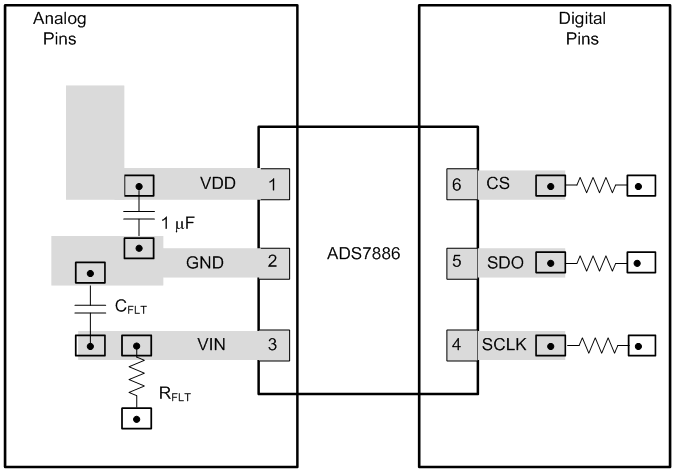SLAS492B September 2005 – August 2016 ADS7886
PRODUCTION DATA.
- 1 Features
- 2 Applications
- 3 Description
- 4 Revision History
- 5 Device Comparison Table
- 6 Pin Configuration and Functions
- 7 Specifications
- 8 Detailed Description
- 9 Application and Implementation
- 10Power Supply Recommendations
- 11Layout
- 12Device and Documentation Support
- 13Mechanical, Packaging, and Orderable Information
11 Layout
11.1 Layout Guidelines
Figure 35 shows a board layout example for the ADS7886. Some of the key considerations are
- Use a ground plane underneath the device and partition the PCB into analog and digital sections.
- Avoid crossing digital lines with the analog signal path.
- The power sources to the device must be clean and well-bypassed. Use 1-µF ceramic bypass capacitors in close proximity to the supply pin (VDD).
- Avoid placing vias between the VDD and bypass capacitors.
- Connect ground pin to the ground plane using short, low-impedance path.
- The fly-wheel RC filters are placed close to the device.
Among ceramic surface-mount capacitors, COG (NPO) ceramic capacitors provide the best capacitance precision. The type of dielectric used in COG (NPO) ceramic capacitors provides the most stable electrical properties over voltage, frequency, and temperature changes.
11.2 Layout Example
 Figure 35. ADS7886 Layout Example
Figure 35. ADS7886 Layout Example